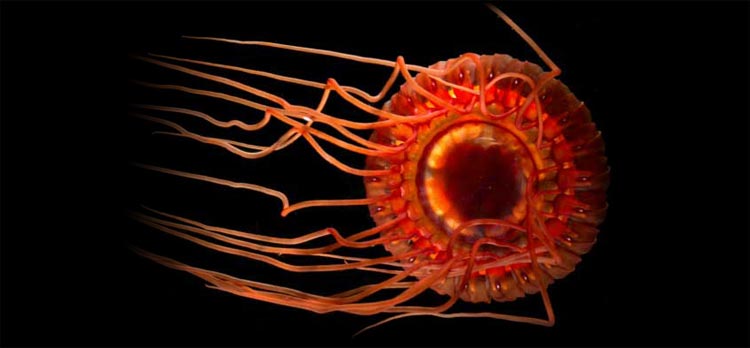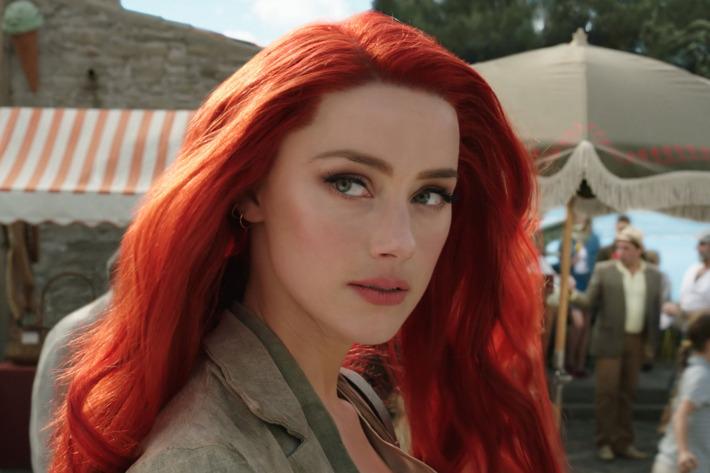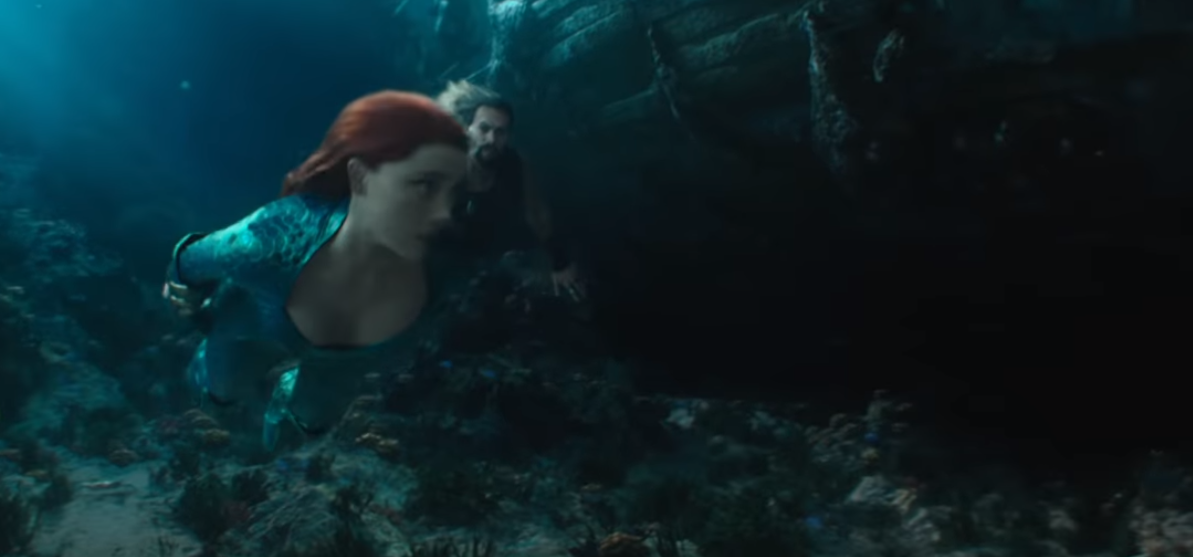There’s a problem with Mera’s hair in Aquaman. Okay, okay, Ariel from The Little Mermaid has the problem too, but let’s just talk about Mera today. Classically, Aquaman’s love interest, Mera, is a redhead. The thing is though, she’s not.
Or wouldn’t be, at least in the way Aquaman and other Atlanteans most often see her. Technically, it’s a problem with how Mera’s hair is shown. We at The Science Of are not anti-ginger. At all.
And it all has to do with the physics of red light underwater.
Okay – and full disclosure, the idea for this article came in light of the handful of articles that have shown up in the entertainment press recently about how Hollywood really has no idea how to make red hair look natural. For example, Amber Heard, who plays Mera in the upcoming Aquaman movie, looks like she got a hair transplant from Toy Story’s Jessie, while KJ Apa who plays Archie on The CW’s Riverdale looks…something towards inhuman.
But let me be clear – I don’t see this as something that should kill the fun of Aquaman or underwater depictions of anything in fiction. Rather, this is something that the addition of a little science could make something that’s cool (people living underwater) even cooler (hair that changes color depending upon the character’s depth.
Let’s talk about the color red. It’s the first “letter” of the familiar visible light spectrum: ROY G BIV
Red
Orange
Yellow
Green
Blue
Indigo
Violet
A few things about the way the colors line up – in nature, they always be organized this way. Spot a rainbow after a storm? The colors will look this way. Red will always be beside orange, green beside blue, etc. Also, red light has the lowest energy and the longest wavelength. The lowest energy partly explains why red lights were used in photography darkrooms – the energy wasn’t enough to expose the film, but gave enough light that you could see what you were doing.
Oh, and of course, as Isaac Newton showed us, and Pink Floyd reminded us:
White light contains all the colors of the spectrum. All the colors of a rainbow are in white light, and they can be separated.
What we’re concerned with is what happens to those colors when that sunlight enters water.
As the white light enters the water, some colors are absorbed by the water before others. As you probably guessed, red is the first to go. By 5 meters of depth (around 16 feet), virtually 90% of the intensity of red is gone. That means that if you had something red with you as you dove through clear water (the difference between salt or fresh is minimal), the “redness” of the object would decrease and decrease, transitioning through a rusty orange to dusky tan and finally to black.
You lose the remaining colors of the visible spectrum in the order from least to most energy, so the next color to go would be orange (10 m), yellow (14 m), green (20 m), blue (33 m), and finally, purple at 20 m. Some color still will be visible, depending upon other factors. And remember – the reason why you see colors is that the color you are seeing is the colors that’s being reflected. All the other colors are being absorbed. White on a sunny day – all the colors (and their energies) are reflected. Black on a sunny day – all the colors (and their energies) are absorbed.
The absorption of specific colors by water is also why water appears blue. After a certain thickness of water, all the colors, including violet and some of the ultraviolet wavelengths are absorbed, leaving only the blue wavelengths. Speaking marine biology for a minute, if water the a crystal blue, that means that the water is mostly pure water. In the ocean, that’s not terrific if you’re a fish looking for a meal. Water that’s greenish or a lighter blue has particulates in it, and you’re seeing some of those colors reflected off of the particulates which could include phytoplankton and zooplankton – perfect snacks for small fish, which are snacks for larger fish, and on and on. A good way to remember – blue, blue, blue: dead, dead, dead.
For a dramatic look at how color behaves underwater – check out the following video:
So – Mera of the bright red hair. And by extension, the colors of Atlantis, as shown in the trailer for the film:
I’m not trying to be a killjoy here, but it wouldn’t happen. Can’t happen unless Atlantis is being illuminated by white light that’s analogous to natural sunlight. A blue-ish luminescent light wouldn’t do it, as the blue light wouldn’t have any red light in it to reflect off of Mera’s hair for example. Mera and the bulk of Atlantis would be a dark brown/blue, muddled, almost monochromatic place. By about 45 feet, you’ve lost all your brighter colors. A real Atlantis would not be pretty. It would be realistic, but not pretty.
A nod to this would be nice – we meet Mera in Atlantis where she’s rather plainly dressed, but as she rises to the surface, color starts to come back to her, and she exits the water a colorful, red-haired vision of otherworldly beauty.
But – thing is, if Atlanteans came from the surface, originally, they would most likely know, remember and use colors. But for their fishy friends – image that. Under 5 meters, you would have no idea what the color red was. Live your entire life deeper than five meters, and you’ve have no idea it even existed.
Hold up – I hear you.
“But – not so fast there, science teacher,” you say, “I’ve seen shows on Discovery and NatGeo about creatures that live in the deep sea, and when they shine a light on them, or pull them up – they’re red. Why are they red if nothing down there can see it for any kind of benefit? Explain that one.”

The deep-sea scyphozoan jellyfish, Atolla wyvillei, as seen under white light. Image courtesy of Edith A. Widder, Operation Deep Scope 2005 Exploration, NOAA-OE.
Somewhere along the evolutionary line, a deep or deeper sea creature had a mutation in their pigmentation that resulted in a red color being produced. At depth, red = black, so our mutant fish looked black in its shadowy habitat. As a result, the mutant fish avoided predators, ate well because it could sneak up on prey, and lived to reproduce and pass those genes on, while the fish that didn’t have a red mutation was someone’s dinner, and didn’t pass their genes on to the next generation. As Pearl Jam said, “It’s evolution baby.”
(Cool pop culture aside: The video for Pearl Jam’s “Do the Evolution” linked to above was directed by Kevin (Batman: The Animated Series) Alteiri and Todd (Spawn) McFarlane and features – without being named – a smiling woman with short black hair, interpreted by many as an homage, or even a direct reference to the character Death from Neil Gaiman’s Sandman works.)










